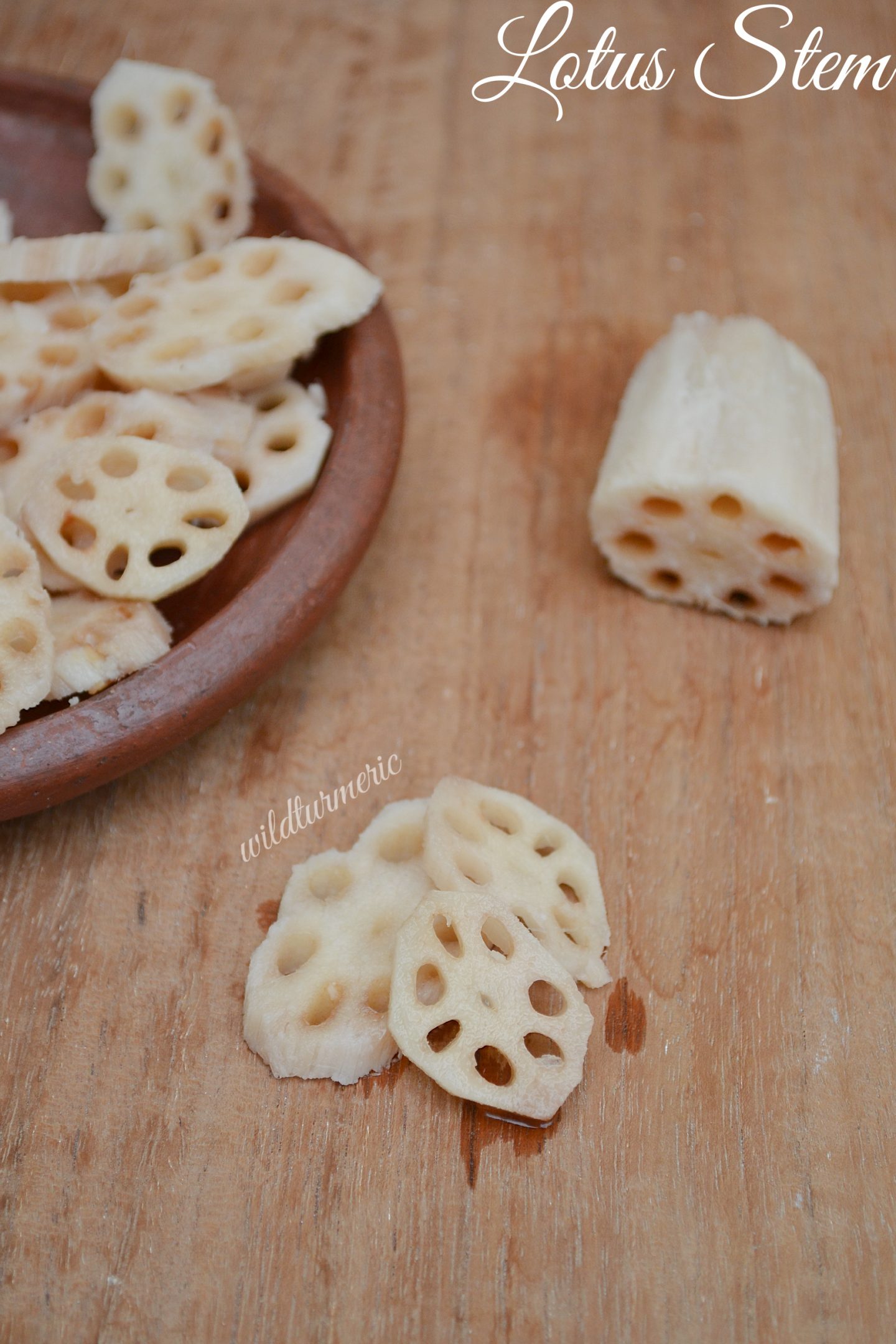
Lotus Stem Common Names:
 Lotus Plant:
Lotus Plant:
Lotus plants are grown commercially for harvesting the stem in countries like Japan where it is used extensively in cooking. Though we don’t get lotus stems very commonly here in India, last week when I went to my local town, I saw lotus stems placed in a huge bucket filled with water.
I was overjoyed and got a few for cooking at home. Lotus stems are long, plump and are light brown color and the height of the stem can vary between 2 to 4 meters. When you peel the outer skin and then chop it into pieces, you will find small holes inside which make it look beautiful and unique.
The holes are nothing but air cubicles that run through the entire stem. This unassuming vegetable is packed full of nutrition and if you read its nutritional values, you will be impressed like me too!
Nutritional Value Of Lotus Stem:
 Lotus Stem Health Benefits:
Lotus Stem Health Benefits:
1. Lotus Stem For Constipation:
2. Lotus Stem For Hair & Skin:
Lotus stem is very rich in vitamin C (more than 70 % of the daily recommended value). Vitamin C is a wonderful antioxidant which prevents free radical damage greatly.
Vitamin C also helps in collagen production which is very essential for healthy skin, hair and bones. Lotus stem is rich in copper which is very essential for healthy hair, you can read that study that proves its antioxidant properties here.
3. For Lowering Cholesterol:
4. For Weight Loss:
5. Lotus Stem & Vitamin B:
6. For Regulating Blood Pressure & Blood Sugar:
Lotus stem is especially useful for diabetes and high blood pressure patients as it helps regulate both blood sugar levels and blood pressure. Since it is rich in potassium it helps regulate blood pressure very effectively.
You can read the study that proves its use for diabetes here. In addition, lotus stem has anti bacterial and anti viral properties and regular consumption will improve immunity greatly.
 Where To Buy Lotus Stem ?
Where To Buy Lotus Stem ?
Lotus Stem Side Effects:
How To Cook Lotus Stem?
1. Before using the lotus stem, wash them in water well to get rid of any dirt and then cut the end parts on both sides.

2. Now peel off the outer brownish skin with a peeler, you will find white stem inside.

3. Cut into thin rounds, you can cut it slantingly too.

4. Wash in water again to remove any dirt.

5. Now boil in water till it gets cooked, you can also pressure cook it. Don’t throw away the water it is cooked in, add it to the gravy along with the cooked lotus stem.
Kamal Kakdi Sabzi Recipe | Lotus Stem Sabzi:
For the gravy, saute 1 large onion, 3 tomatoes, a small piece of ginger and 3 garlic cloves (garlic and ginger pounded together) in a little oil and grind it finely in a mixer.
Heat oil in a pan and add red chilli powder, turmeric powder and coriander powder (make sure to keep the flame on low and don’t burn the powders). Once the raw smell of the powders goes, add in the ground mixture and salt and boil till thick.
Once thick, add in the cooked lotus stem along with cooked water and 1/2 tsp of garam masala powder. Cook till it forms a semi gravy, finally garnish with coriander leaves. A simple but very healthy sabzi……:)

Discover more from Wildturmeric
Subscribe to get the latest posts sent to your email.

 Lotus Stem Health Benefits:
Lotus Stem Health Benefits:  Where To Buy Lotus Stem ?
Where To Buy Lotus Stem ?